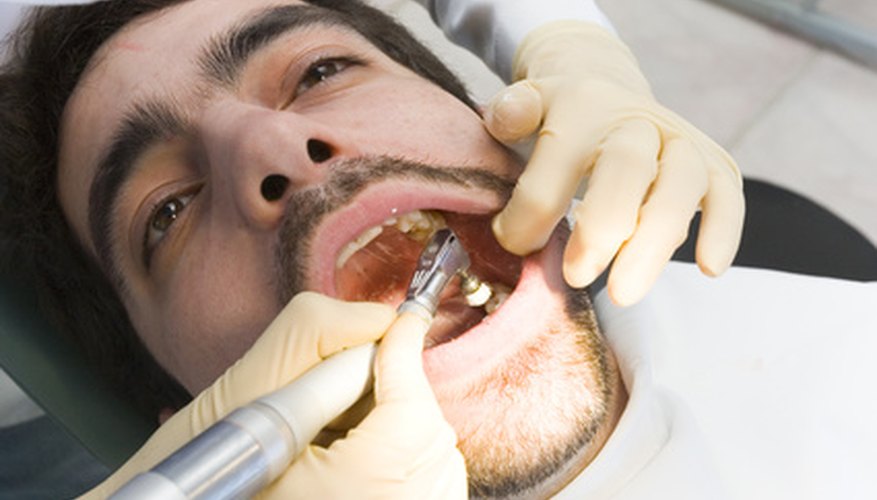The only safe way to remove teeth, gold or otherwise, is to seek out your dentist and make an appointment to have them removed. The gold on a gold tooth consists of an onlay, which is a partial filling that is used to cover partially damaged teeth. The onlay covers the surface of the exposed tooth to protect it from damage and is usually applied directly to the tooth at the dentist's office. If the gold tooth is damaged, or you want to replace it with a more natural material, you'll have to visit the dentist in order to have it removed or repaired.
- The only safe way to remove teeth, gold or otherwise, is to seek out your dentist and make an appointment to have them removed.
- If the gold tooth is damaged, or you want to replace it with a more natural material, you'll have to visit the dentist in order to have it removed or repaired.
Contact your dentist and make an appointment as soon as possible, if your gold tooth has been damaged. Failure to repair a gold tooth could cause infection in your mouth, which in turn will cause you pain. Make sure you let the dentist know the purpose of your visit. You may have to schedule an emergency appointment, depending on the severity of the damage.
Tell your dentist why you want the gold tooth removed. If you're having it repaired, several appointments may be necessary, in order to fully restore the gold tooth. This could involve the dentist taking an impression of your teeth, and writing a prescription for you to obtain a replacement gold overlay, which will be fitted on your teeth at another appointment. Depending on the purpose of the removal, the dentist may also take dental photographs. It may take up to several weeks for a gold crown to be made and fitted to your teeth.
- Tell your dentist why you want the gold tooth removed.
- This could involve the dentist taking an impression of your teeth, and writing a prescription for you to obtain a replacement gold overlay, which will be fitted on your teeth at another appointment.
Take any prescribed medicines as ordered by the dentist, and discuss whether surgery will be needed to repair or remove the tooth. The dentist may prescribe anaesthetic to keep the area clean, and you may be required to use a rubber dam to isolate the tooth during the surgical procedure. The rubber dam is a latex sheet used to absorb the moisture from the teeth and prevent any materials or substances used during the procedure from falling into your throat.
Ask the doctor about the procedure of removing the tooth. He may use a hand piece to shave off the decay surrounding the gold tooth before replacing the onlay, or crown. The dentist may give you a temporary crown prior to your procedure, to prevent your exposed tooth from cold sensitivity. You'll book a cementation visit, so that the gold teeth, crown or onlay can be bonded into your mouth. The cementation process involves applying a viscous liquid in the area of the teeth that are being restored. The viscous liquid then hardens and bonds the onlay to the tooth.
- Ask the doctor about the procedure of removing the tooth.
- The dentist may give you a temporary crown prior to your procedure, to prevent your exposed tooth from cold sensitivity.
Bite marking paper when asked by the dentist, so he can check the permanent fit of the gold crown or overlay after the surgical procedure. The dentist may also floss in the area to ensure the tooth is making correct contact with the other teeth.
